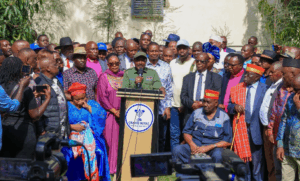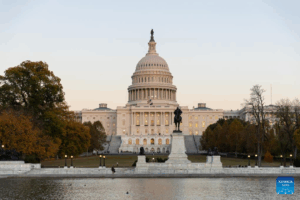Kenya Strengthens Nuclear Partnership with South Korea Through New Agreement
The two institutions reaffirmed their commitment to accountability, transparency, and mutual benefit as they created this new era of cooperation.

This new MoU also builds on earlier collaboration between NuPEA and KAERI, which led to a KNRR project feasibility study. The study provided a blueprint for Kenya's nuclear research program, including economic assessments, site surveys, and public hearings. Photo/ Courtesy
By Juliet Jerotich
Kenya has taken yet another strong step towards achieving its nuclear energy ambitions after inking a technical cooperation deal with South Korea. The deal, which was signed between the Nuclear Power and Energy Agency (NuPEA) and the Korea Atomic Energy Research Institute (KAERI), will see the two entities collaborate in nuclear development, research, and capacity building.
Kenya has taken yet another strong step towards achieving its nuclear energy ambitions after inking a technical cooperation deal with South Korea. The deal, which was signed between the Nuclear Power and Energy Agency (NuPEA) and the Korea Atomic Energy Research Institute (KAERI), will see the two entities collaborate in nuclear development, research, and capacity building.
The Memorandum of Understanding (MoU) was also signed by NuPEA Chief Executive Officer Justus Wabuyabo and KAERI President Dr. Han Gyu Joo on the sidelines of the 69th International Atomic Energy Agency (IAEA) General Conference in Vienna. The signing indicates Kenya’s deepening determination to build a robust nuclear infrastructure that supports the country’s medium to long-term energy and development strategy.
At the heart of this partnership is the Kenya Nuclear Research Reactor (KNRR) project that is spearheaded by NuPEA. The research reactor, the agency reports, will serve as a key platform for advancing nuclear science, training specialists, and enhancing the general research and development capacity of Kenya. The KNRR is expected to benefit various sectors including health, agriculture, industry, and energy in conformity with Kenya Vision 2030 and the Bottom-Up Economic Transformation Agenda (BETA).
This new MoU also builds on earlier collaboration between NuPEA and KAERI, which led to a KNRR project feasibility study. The study provided a blueprint for Kenya’s nuclear research program, including economic assessments, site surveys, and public hearings. These pillars are what the new MoU builds upon and aims to deepen cooperation in the technical area while pushing development towards Kenya’s nuclear program.
NuPEA noted that this collaboration with KAERI is a milestone in the projection of Kenya as a nuclear technology power in Africa. Kenya hopes, with the large experience of Korea, to improve its scientific foundation, enhance technological skill, and enlarge opportunities for industry and energy development.
The two institutions reaffirmed their commitment to accountability, transparency, and mutual benefit as they created this new era of cooperation. The two institutions were hopeful that the agreement would not just improve Kenya’s energy security but enhance socio-economic development as well.
In the future, Kenya has ambitious plans to produce 20,000 megawatts of nuclear power by 2040 and has already set plans in place to build its first nuclear power plant in Siaya County (MoU) was also signed by NuPEA Chief Executive Officer Justus Wabuyabo and KAERI President Dr. Han Gyu Joo on the sidelines of the 69th International Atomic Energy Agency (IAEA) General Conference in Vienna. The signing indicates Kenya’s deepening determination to build a robust nuclear infrastructure that supports the country’s medium to long-term energy and development strategy.
At the heart of this partnership is the Kenya Nuclear Research Reactor (KNRR) project that is spearheaded by NuPEA. The research reactor, the agency reports, will serve as a key platform for advancing nuclear science, training specialists, and enhancing the general research and development capacity of Kenya. The KNRR is expected to benefit various sectors including health, agriculture, industry, and energy in conformity with Kenya Vision 2030 and the Bottom-Up Economic Transformation Agenda (BETA).
This new MoU also builds on earlier collaboration between NuPEA and KAERI, which led to a KNRR project feasibility study. The study provided a blueprint for Kenya’s nuclear research program, including economic assessments, site surveys, and public hearings. These pillars are what the new MoU builds upon and aims to deepen cooperation in the technical area while pushing development towards Kenya’s nuclear program.
NuPEA noted that this collaboration with KAERI is a milestone in the projection of Kenya as a nuclear technology power in Africa. Kenya hopes, with the large experience of Korea, to improve its scientific foundation, enhance technological skill, and enlarge opportunities for industry and energy development.
The two institutions reaffirmed their commitment to accountability, transparency, and mutual benefit as they created this new era of cooperation. The two institutions were hopeful that the agreement would not just improve Kenya’s energy security but enhance socio-economic development as well.
In the future, Kenya has ambitious plans to produce 20,000 megawatts of nuclear power by 2040 and has already set plans in place to build its first nuclear power plant in Siaya County








